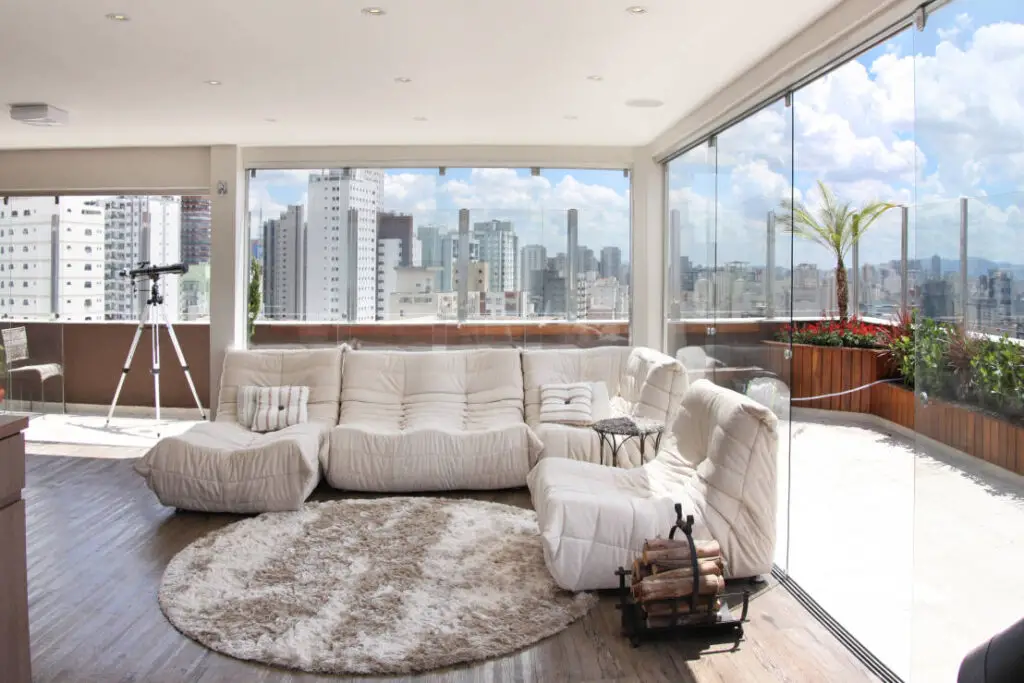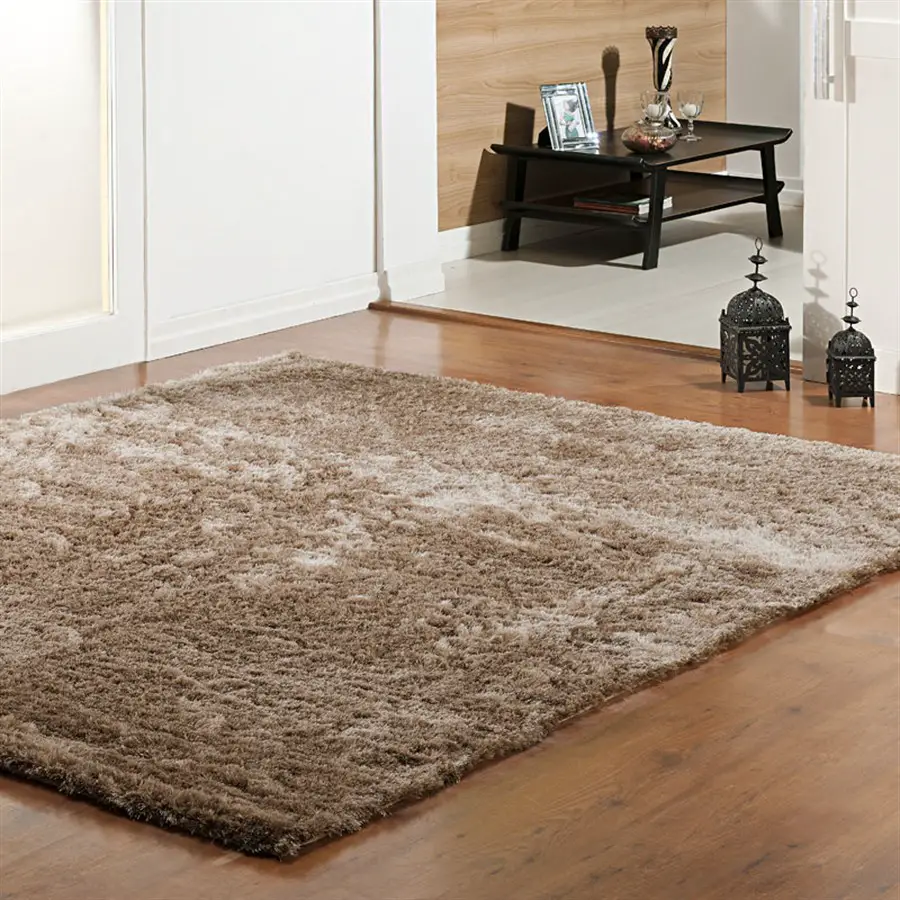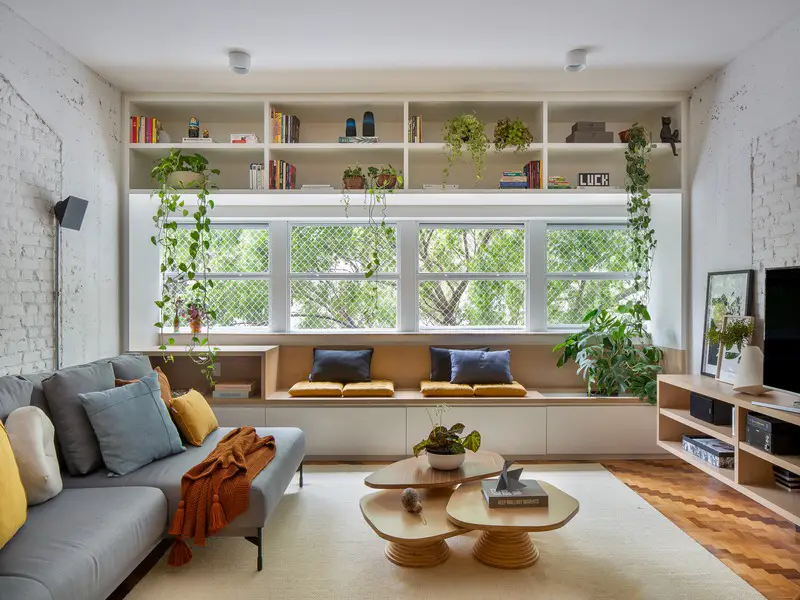When it comes to decorating your living room, the right rug can make all the difference. A well-chosen rug can add color, texture, and warmth to your space while also tying together your decor. But with so many options available, how do you choose the perfect rug for your living room? In this article, we’ll explore some tips and tricks for selecting the ideal rug for your space.
Understand Your Space
Understanding the size and layout of your living room is an essential step in selecting the perfect rug. Before you start shopping, take some time to measure the space where you want to place the rug. This will give you an idea of the size of the rug you need.
Consider the furniture arrangement in your living room. Will the rug sit beneath a coffee table, or will it extend to the edges of the room? If you have a large living room with multiple seating areas, you may want to consider using multiple rugs to define each space.
It’s also important to consider the shape of your living room. Is it rectangular, square, or an irregular shape? This will influence the shape of the rug you choose. A rectangular rug is a good choice for a long, narrow living room, while a round rug can soften the angles of a square room.
Once you have a clear understanding of your living room’s size and layout, you can start to consider the other factors that will influence your rug selection, such as color, material, and texture. By taking the time to understand your space, you can make an informed decision and choose a rug that will enhance the style and comfort of your living room.

Choose the Right Material
Selecting the right material for your living room rug is crucial in ensuring its durability, texture, and ease of care. There are many materials to choose from, each with its own unique characteristics and benefits.
Wool is a popular choice for living room rugs as it is soft, warm, and naturally stain-resistant. It is also a durable material that can withstand heavy foot traffic. However, wool can be more expensive than synthetic options like nylon or polyester.
If you have young children or pets, you may want to consider a rug made of a stain-resistant material like polypropylene. This synthetic material is easy to clean and maintain and is resistant to spills and stains. Additionally, it’s more affordable than wool and can be a great option for those on a budget.
Another material option to consider is silk, which is known for its lustrous appearance and softness. However, silk is not as durable as other materials and can be more difficult to clean.
When selecting a material for your rug, also consider the overall style and aesthetic of your living room. For example, a natural fiber like jute or sisal can provide a rustic, organic feel, while a plush, shaggy rug can add a cozy, inviting texture.
Ultimately, choosing the right material for your living room rug is about finding the balance between your budget, lifestyle, and personal style. Take the time to research and explore your options to find the perfect rug for your space.
Consider the Color Scheme
Choosing the right color scheme for your living room rug is an important decision, as it can greatly impact the overall aesthetic of the space. You want your rug to complement the existing colors in your living room without overpowering them.
A good starting point is to look for a rug that incorporates one or two of your dominant colors. This can help tie your living room together and create a cohesive look. If your living room has neutral tones, you may want to consider a rug with a subtle pattern or texture to add interest.
On the other hand, if you’re looking to make a bold statement, you can use your rug to introduce a pop of color or pattern to your space. For example, if your living room has a neutral color palette, a vibrant rug with bold geometric shapes can create a stunning focal point.
It’s important to consider the size of your living room and the furniture arrangement when choosing a rug color. A larger rug can have a more significant impact on the color scheme of the room, while a smaller rug can add a subtle accent.
When in doubt, a neutral rug can be a safe and versatile choice. A beige or gray rug can easily blend with most living room color schemes and provide a timeless, classic look.
Determine Your Style
The style of your living room rug is an essential factor to consider when selecting the perfect rug for your space. The rug you choose should reflect your personal style and complement the overall aesthetic of your living room.
If your living room has a modern and minimalist design, you may want to look for a rug with simple, clean lines and a solid color. A sleek and contemporary rug can add a touch of sophistication to your space without overwhelming it. Neutral colors like beige, white, or gray can complement the clean lines of modern furniture and give a cohesive look to the room.
For an eclectic or bohemian-inspired living room, a rug with a bold pattern or intricate details can make a significant impact. Consider a rug with geometric shapes or a colorful print to create an eye-catching focal point. When choosing a patterned rug, make sure to consider the size of your living room, and choose a rug that is proportional to the space.
Don’t be afraid to mix and match different textures and styles to create a unique look that represents your personal taste. For example, pairing a rustic leather sofa with a plush shag rug can create a cozy and inviting space with a touch of warmth and texture. If you’re unsure of which style to choose, you can always consult with a professional interior designer to guide you through the decision-making process.
Think About Maintenance
When choosing a living room rug, it’s crucial to think about maintenance and upkeep to ensure that your investment stays looking its best. You want to select a rug that can withstand the amount of foot traffic in your living room, and consider how easy it is to clean.
If you have pets or young children, you’ll want to choose a rug that is durable and easy to clean. Look for a rug with a low pile or tight weave, as these are typically easier to vacuum and spot clean. Natural fibers like wool or cotton are more stain-resistant than synthetic materials, but they can be more challenging to clean if they do become soiled. If you’re concerned about spills and stains, consider a rug made of a stain-resistant material like polypropylene.
Another critical factor to consider when thinking about maintenance is investing in a high-quality rug pad. A rug pad not only adds an extra layer of cushioning but also protects your floors from scratches and prevents slipping. Rug pads also help to extend the life of your rug by reducing friction and wear and tear.
When it comes to cleaning your rug, always check the manufacturer’s care instructions to ensure that you’re using the correct cleaning method. Vacuuming regularly is the best way to keep your rug looking its best and prevent dirt and debris from settling into the fibers. You can also spot clean with a mild detergent and water, but be careful not to use too much water or rub the fibers too vigorously.
Explore Different Shapes
When it comes to choosing the ideal rug for your living room, many people automatically think of rectangular rugs. However, it’s important to remember that there are other shape options to explore. Round or oval rugs, for example, can add a unique touch to your space and create a softer, more organic look. They can work particularly well in smaller living rooms or spaces where you want to break up the straight lines of furniture.
Another option to consider is a runner rug. These long, narrow rugs are perfect for defining a hallway or adding texture to a smaller area of your living room. They can be especially useful in open-concept spaces where you want to create defined zones without using walls or other barriers.
Choose the Right Size
Selecting the right size rug for your living room is a crucial part of creating a cohesive and comfortable space. A rug that’s too small can make your furniture look disconnected and diminish the impact of your decor, while a rug that’s too large can overwhelm the space and make it feel cramped.
To determine the correct size for your rug, start by measuring the area where you want to place it. Consider the layout of your living room, the position of your furniture, and any other decorative elements you want to highlight. As a general rule, your rug should be large enough to fit all of your furniture comfortably, with at least six inches of rug visible beyond the edges of your sofa and chairs.
If you have a smaller living room or an open-concept space, a slightly smaller rug can work well, as long as it’s still large enough to anchor your furniture. Alternatively, you can opt for multiple smaller rugs arranged strategically throughout the room to create distinct zones.
Remember, the right size rug will not only enhance the look of your living room, but also create a cozy and inviting atmosphere for you and your guests to enjoy.
Mix and Match
Mixing and matching rugs can add depth and dimension to your living room decor. It allows you to create a unique and personalized space that reflects your style. Layering rugs is a great way to add texture, color, and pattern to your room. For example, you can place a smaller, patterned rug on top of a larger, solid-colored rug to create a cozy and bohemian look. This works particularly well if you have hardwood floors and want to add warmth to your space.
Another way to mix and match rugs is to use different shapes and textures in different areas of the room. For instance, you could use a round or oval rug in your seating area to add visual interest, while a rectangular rug could define your dining area. You could also use a shaggy or fluffy rug in your reading nook to create a cozy and inviting atmosphere, while a flatweave rug could be used in your high-traffic areas for easy maintenance.
When mixing and matching rugs, it’s important to keep the overall color scheme and style of your room in mind. Choose rugs that complement each other in terms of color and pattern, and make sure they work well with your furniture and accessories. Mixing and matching can be a fun and creative way to add personality to your living room, so don’t be afraid to experiment and try different combinations until you find the perfect mix.
Invest in Quality
When it comes to choosing a rug for your living room, it’s important to keep in mind that quality should be a top priority. While cheaper options may seem like a good deal, they may not be worth it in the long run. A high-quality rug will last for years and maintain its appearance, even with regular use.
Quality rugs are typically made with durable materials that can withstand wear and tear. They’re also often crafted with attention to detail and skill, which means that they’re less likely to fray or unravel over time. Investing in a quality rug can also mean investing in natural materials, such as wool or silk, which are often softer and more luxurious than synthetic options.
Another advantage of investing in a quality rug is that it can add value to your home. If you ever decide to sell your house, a well-made rug can be an attractive feature that potential buyers will appreciate. Plus, if you take care of your rug properly, it can maintain its value over time.
When shopping for a quality rug, look for one that’s made with durable materials and has a high knot count. A high knot count means that the rug has more knots per square inch, which results in a denser and more intricate design. You should also pay attention to the backing of the rug, as a sturdy backing can help keep the rug in place and prevent slipping.

Get Creative with Placement
If you want to add some creativity and visual interest to your living room, try thinking outside the box when it comes to rug placement. Hanging a rug on the wall can add a unique and unexpected touch to your decor. It can serve as a statement piece that draws the eye and adds texture and warmth to the room. Choose a rug with a bold pattern or vibrant colors to make an even bigger impact.
Another way to use a rug creatively is to repurpose it as a tablecloth or throw. A small, colorful rug can be draped over the arm of a sofa or chair to add a pop of color and texture. You can also use a rug as a tablecloth on a coffee table or dining table to create a bohemian or eclectic look.
If you have a large living room, you can use a rug to define a smaller seating area within the space. Place a rug under a grouping of chairs or a loveseat to create a cozy conversation area. This can help break up the room and make it feel more intimate.
No matter how you choose to use your rug, remember to have fun with it and experiment with different placements and styles.
Conclusion
Choosing the ideal rug for your living room requires careful consideration of your space, style, and maintenance needs. By following these tips and exploring different options, you can find a rug that adds beauty and functionality to your space. Remember to invest in quality and have fun with mixing and matching different shapes, textures, and styles.




